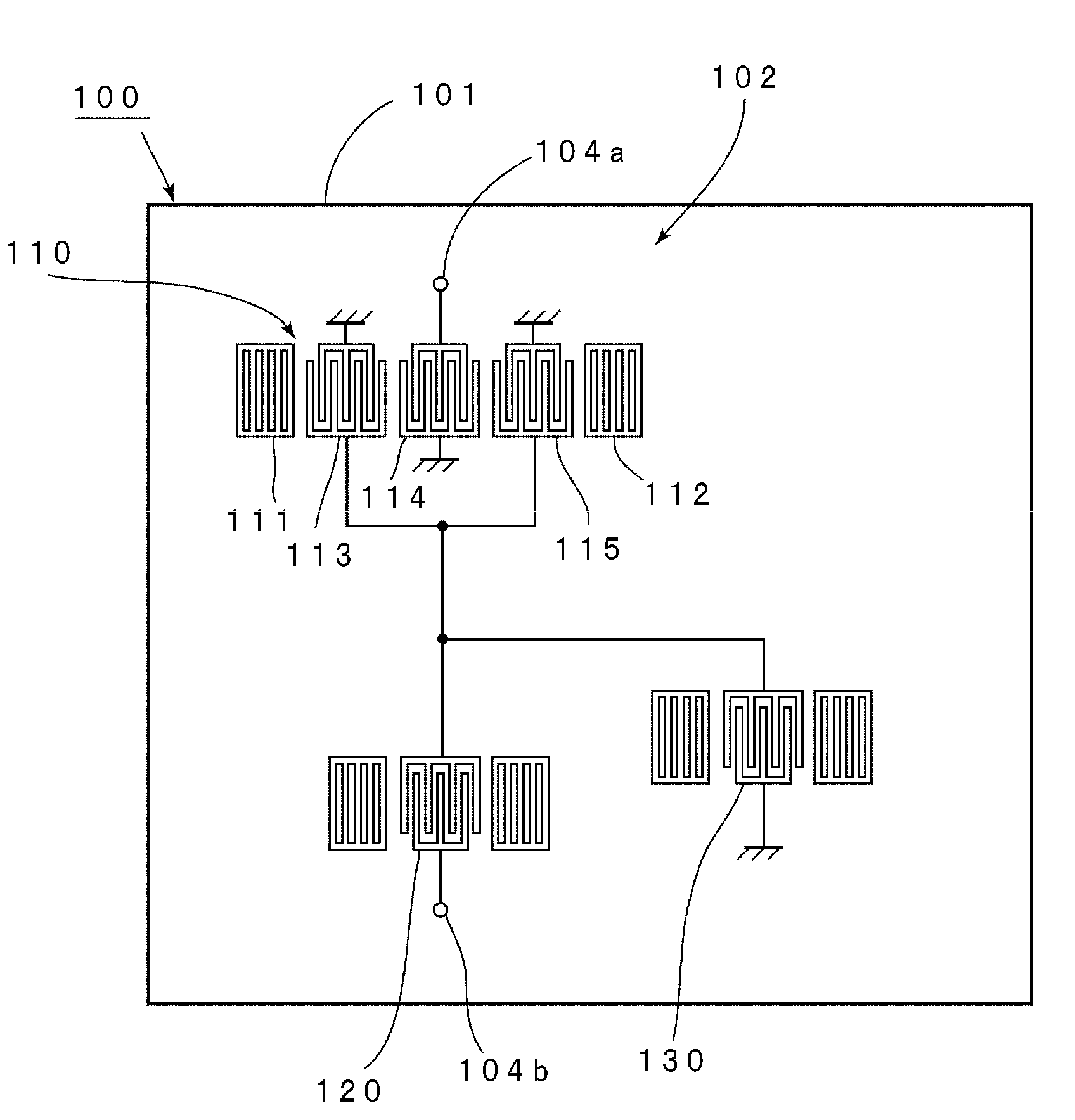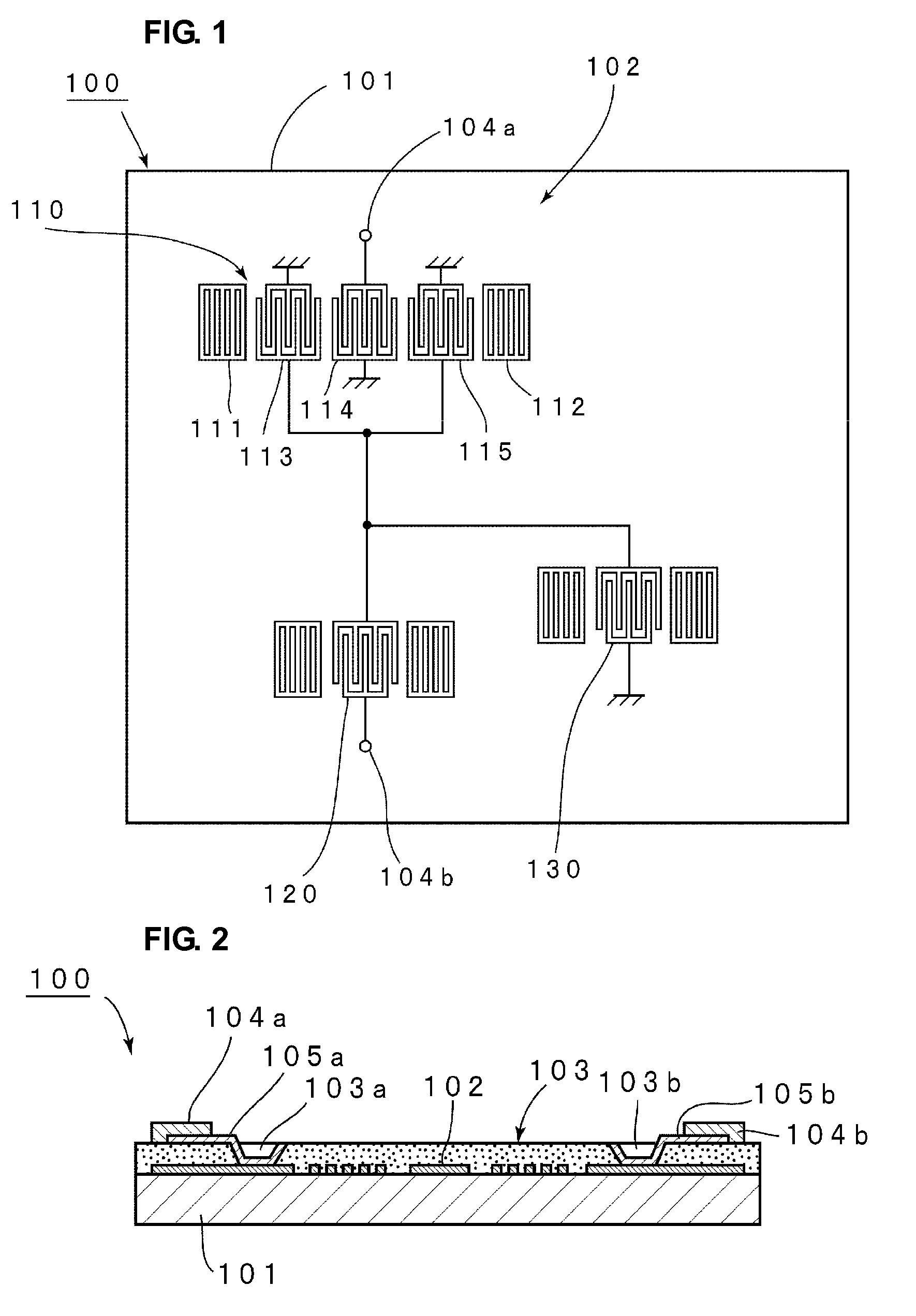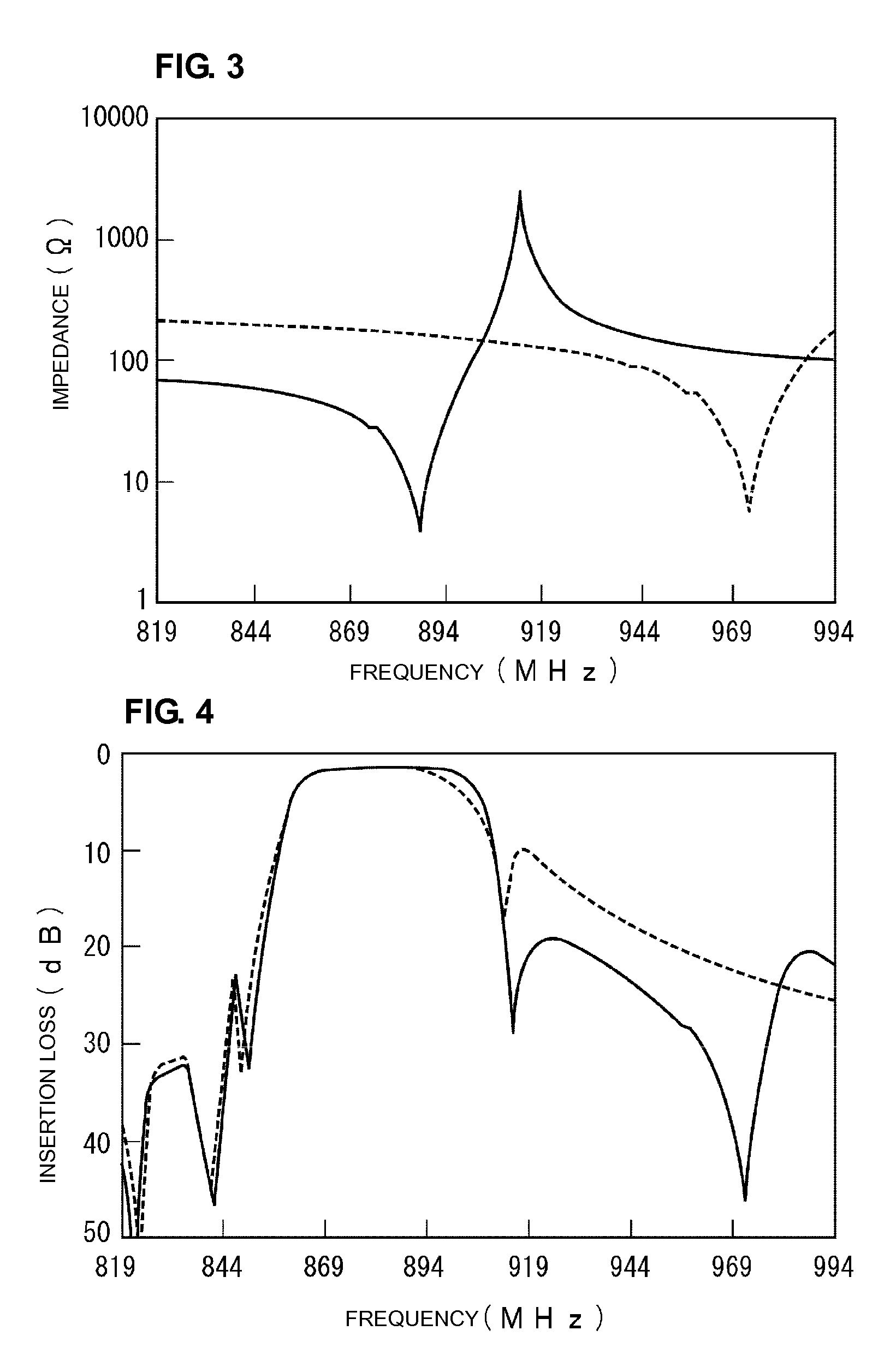Boundary acoustic wave filter device
a filter device and acoustic wave technology, applied in the direction of impedence networks, electrical devices, etc., can solve the problems of insufficient attenuation in the stopband, deterioration of passband characteristics, and insufficient attenuation in the passband, so as to improve the attenuation, simplify the packaging structure of the boundary acoustic wave filter device, and improve the attenuation
- Summary
- Abstract
- Description
- Claims
- Application Information
AI Technical Summary
Benefits of technology
Problems solved by technology
Method used
Image
Examples
Embodiment Construction
[0038]Preferred embodiments of the present invention will be described below with reference to the accompanying drawings.
[0039]FIG. 1 is a schematic plan view of the electrode configuration of a boundary acoustic wave filter device according to a preferred embodiment of the present invention, and FIG. 2 is a schematic front-sectional view describing a substantial portion of the boundary acoustic wave filter device.
[0040]As shown in FIG. 2, the boundary acoustic wave filter device 100 according to the present preferred embodiment preferably includes a LiNbO3 substrate 101 formed of a single crystal of LiNbO3 as a piezoelectric substrate. A SiO2 film 103 overlies the LiNbO3 substrate 101 as a dielectric film. The boundary acoustic wave filter device 100 according to the present preferred embodiment utilizes an SH-type boundary acoustic wave propagating along a boundary surface between the LiNbO3 substrate 101 and the SiO2 film 103.
[0041]In FIG. 2, an electrode pattern 102 for passive ...
PUM
 Login to View More
Login to View More Abstract
Description
Claims
Application Information
 Login to View More
Login to View More - R&D
- Intellectual Property
- Life Sciences
- Materials
- Tech Scout
- Unparalleled Data Quality
- Higher Quality Content
- 60% Fewer Hallucinations
Browse by: Latest US Patents, China's latest patents, Technical Efficacy Thesaurus, Application Domain, Technology Topic, Popular Technical Reports.
© 2025 PatSnap. All rights reserved.Legal|Privacy policy|Modern Slavery Act Transparency Statement|Sitemap|About US| Contact US: help@patsnap.com



